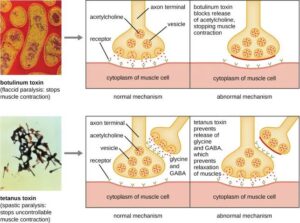Back to: MICROBIOLOGY 300 LEVEL
Welcome to class!
It’s always a pleasure to have you here. You’ve been doing an amazing job keeping up with each topic, and today’s lesson is another important piece of the puzzle in understanding how infections happen. We’re learning about Portals of Entry and Virulence Factors. This topic will help you understand how disease-causing microbes get into the body and what tools they use to cause harm. Think of it as learning how a burglar enters a house and the tricks they use to break in, hide, and steal.
Portals Of Entry And Virulence Factors
Portals of Entry: How Pathogens Get In
Just like a house has doors and windows, the human body has certain entry points that microbes use to invade. These entry points are called portals of entry. They are specific areas of the body where pathogens can gain access, and each portal has its own set of defences.

Here are the major portals of entry:
Respiratory tract – Through the nose and mouth. Pathogens in the air are inhaled.
Examples: Influenza virus, COVID-19 virus, Mycobacterium tuberculosis.
Gastrointestinal tract – Through the mouth, when contaminated food or water is swallowed.
Examples: Vibrio cholerae, Salmonella typhi.
Genitourinary tract – Through the reproductive or urinary organs, usually during sexual contact or unhygienic conditions.
Examples: HIV, Neisseria gonorrhoeae, Candida albicans.
Skin – Though intact skin is a good barrier, pathogens can enter through cuts, wounds, insect bites, or injections.
Examples: Plasmodium species (malaria via mosquito bite), Clostridium tetani (tetanus via wounds).
Conjunctiva (eyes) – Some microbes can enter through the eyes.
Example: Chlamydia trachomatis (causing eye infections).
Virulence Factors: How Pathogens Cause Disease
Once the pathogen gets into the body, it needs tools to survive, multiply, and cause illness. These tools are called virulence factors. They are like weapons or tricks that help pathogens succeed in their mission.
Let’s look at the major types of virulence factors:
Adhesion factors – These help the microbe stick to body cells so they’re not washed away.
Example: Pili in E. coli that help it cling to the urinary tract.
Enzymes – Some bacteria produce enzymes that break down body tissues and help the pathogen spread.
Example: Streptococcus produces hyaluronidase, which breaks down connective tissue.
Toxins – Poisonous substances that damage body cells.

Exotoxins are produced and released by bacteria (e.g., cholera toxin).
Endotoxins are found in the outer wall of certain bacteria and released when they die (e.g., in E. coli infections).
Capsules – A protective layer that helps bacteria avoid being eaten by white blood cells.
Example: Streptococcus pneumoniae uses its capsule to hide from the immune system.
Antigenic variation – Some microbes change their surface proteins to avoid being recognised by the immune system.
Example: Trypanosoma species that cause sleeping sickness.
Think of these virulence factors like tools in a criminal’s toolbox—each one serving a purpose to help the pathogen overcome the body’s defence and cause disease.
Summary
- Portals of entry are specific routes through which pathogens enter the body, such as the respiratory tract, skin, or gastrointestinal system.
- Virulence factors are the features or tools that help pathogens attach, invade, and damage the host.
- Together, entry and virulence determine how harmful a pathogen can be and what type of disease it causes.
Evaluation
- Define portals of entry and list three examples.
- What are virulence factors? Mention two and explain their roles.
- Why is the capsule an important virulence factor for some bacteria?
Understanding how infections begin and progress is key to preventing and treating them. You’re learning not just to memorise facts, but to think like a microbiologist—which is exactly what the world needs. Keep going strong. Afrilearn is here to support you all the way. You’ve got this, and we’ll see you in the next class!
